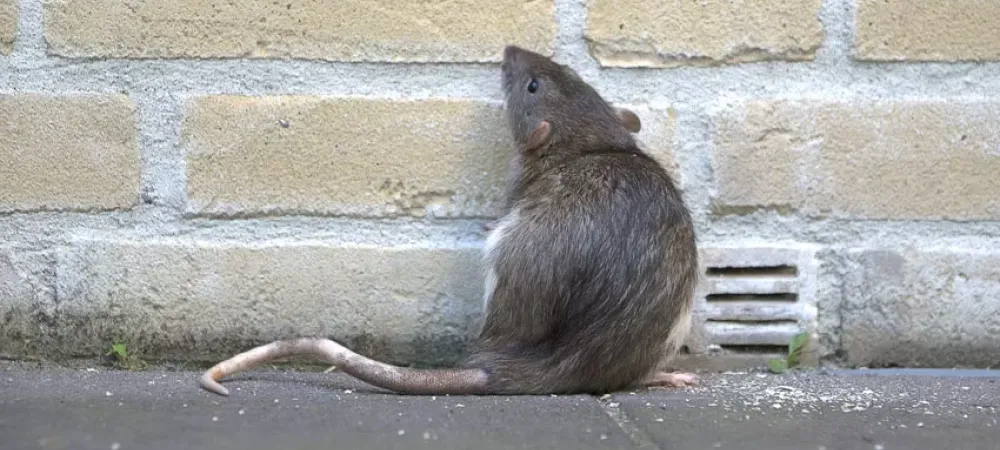What are Common Issues With Rodents?

What are rodents?
Rodents are mammals and are prolific breeders. They are known for taking advantage of our food, water, and shelter sources. Many species of rodents have come to rely on people for their basic needs.
All rodents have front incisors that continuously grow throughout their entire lives. The two most common species of rodents that cause problems for home and business owners are mice and rats. In our area of Southeast Texas, the most common rodent invaders are house mice, roof rats, and Norway rats.
Norway Rats
Adults have heavy, dense bodies. Norway rats have shaggy fur that is brown or gray, and their underbellies are lighter in color. Norway rats' bodies grow to about 9 1/2 inches in length, and their bi-colored tails add another 6 to 8 inches.
Roof Rats
Adults are dark brown or black in color, and they have gray highlights running throughout their fur. Roof rats have a long, slim build. Their bodies grow to about 8 inches in length, and their tails add another 6 to 8 inches to their total body length.
House Mice
Adults have small, slender bodies that grow to between 2 1/2 and 3 3/4 of an inch in length. Their tails add another 3 to 4 inches to their total length. Their tails and large ears are covered in a light layer of soft, velvety fur. House mice have fur, and its color can vary between grayish-brown, dark gray, or black. Their underbellies are lighter in color than their bodies.
Are rodents dangerous?
Rodents are a danger to people, property, and food sources. With their urine, feces, and saliva, rodents contaminate food and the surfaces of homes that they have invaded. Rodents spread a wide variety of diseases and bacteria, including lymphocytic choriomeningitis (LCM), hantavirus, dysentery, leptospirosis, and salmonellosis. They also introduce disease-spreading parasites like fleas, mites, and ticks into homes.
To keep their ever-growing teeth from overgrowing, rodents are constantly chewing on objects. Inside homes, their chewing habits cause damage and destruction to furniture, clothing, flooring, drywall, insulation, pictures, walls, and more. Even worse, rodents have the potential to cause fires and create water damage after chewing through wires and pipes.
Why do I have a rodent problem?
Rodents invade homes and become problematic for homeowners any time of the year. However, rodents do tend to become more problematic in the winter months. That is the time of year when they are looking for temperature-controlled shelter where they can overwinter, and when their food sources become a bit more scarce. If you have a rodent problem on your property or inside your home, it can be due to the easy access for rodents to basic necessities such as water, food, and shelter.
Rodents are attracted to properties where they can get their needs met through the following:
- Gardens
- Compost piles
- Pet food
- Open containers of garbage
- Outdoor eating areas
- Birdseed
- Birdbaths
- Clogged gutters
- Wild animal feeders
- Pet food
- Wood piles
- Dense vegetation
- Piles of debris
Where will I find rodents?
Outside, rodents are found nesting in places that provide them with safe, secluded shelter. Inside, they choose places that mimic their outdoor environment.
- Norway rats nest and burrow in fields, soil near river banks, garbage, woodpiles, under concrete slabs, and along streams and river banks. Their stocky, heavy bodies mean they invade buildings through the ground floor.
- Roof rats have a light build, which allows them to easily climb trees, utility poles, and other structures to gain access to homes through their roofs. Outside, roof rats nest high in trees, inside woodpiles, or in dense vegetation.
- House mice commonly find their way into homes and other buildings as they seek safe, warm shelter. Outside, they nest in tall grasses, tree stumps, dense vegetation, and in wood or rock piles.
Inside homes and other buildings, rodents choose secluded, out-of-the-way places to create their nests. They like to place their nests near food sources. Rodents nest behind walls, in crawl spaces, attics, behind large appliances, underneath sinks, or the backs of cabinets.
How do I get rid of rodents?
To find, accurately identify, and eliminate rodents that are living and nesting on your property or in your home or business, contact a professional pest control expert. At Bill Clark Pest Control, our highly trained 'Bugsperts' receive continuous education and are up-to-date with the latest information and industry trends. To eliminate rodents, our professionals provide thorough inspections and treatment through our residential and commercial pest control programs. For exceptional rodent control in Southeast Texas, reach out to Bill Clark Pest Control.
How can I prevent rodents in the future?
To stop rodents from choosing your home and property to nest on and breed in, the 'Bugsperts' offer the following prevention tips:
- Eliminate entrance points into your home. Repair cracks and crevices in the foundation and exterior walls of your home. Repair holes along your roofline and at roof intersections, and place covers over all vents leading into your home from outdoors.
- Place weather stripping around exterior windows and doors.
- Place a tight-fitting cap on your chimney.
- Remove water sources from your property.
- Make sure outside trash cans have tight-fitting lids on them.
- Trim tree limbs back away from the exterior of your home.
- Locate garden areas, compost piles, and woodpiles a distance away from the exterior of your home.
- Get rid of piles of debris from your property.

